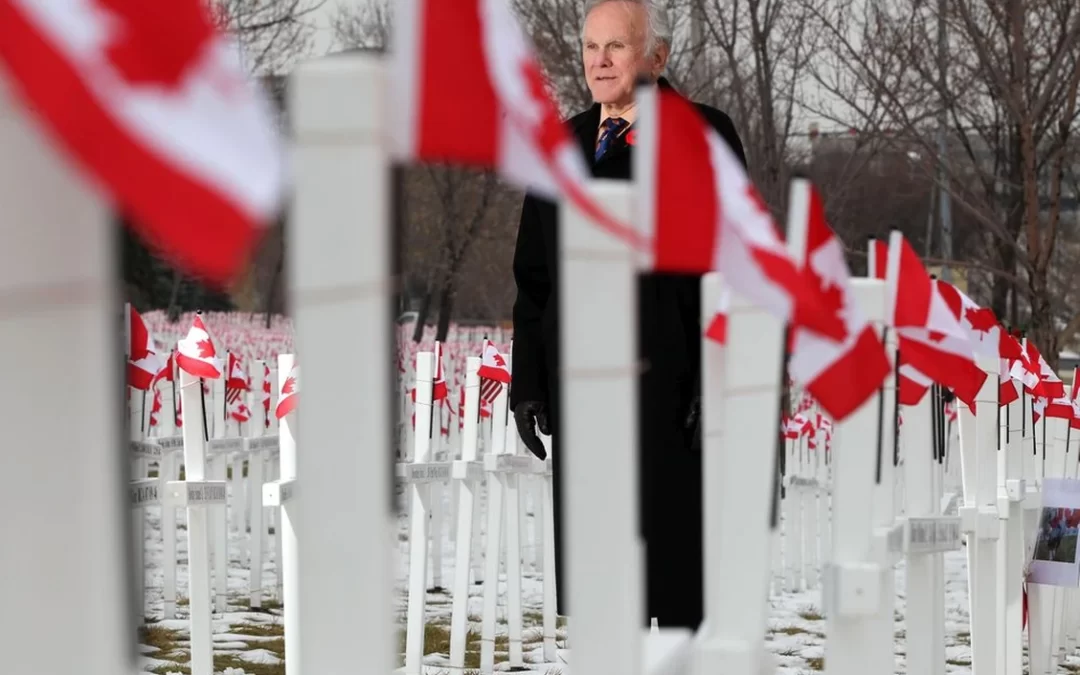source: Calgary Herald
date: November 8, 2021
Nov 08, 2021 • November 8, 2021 • 5 minute read
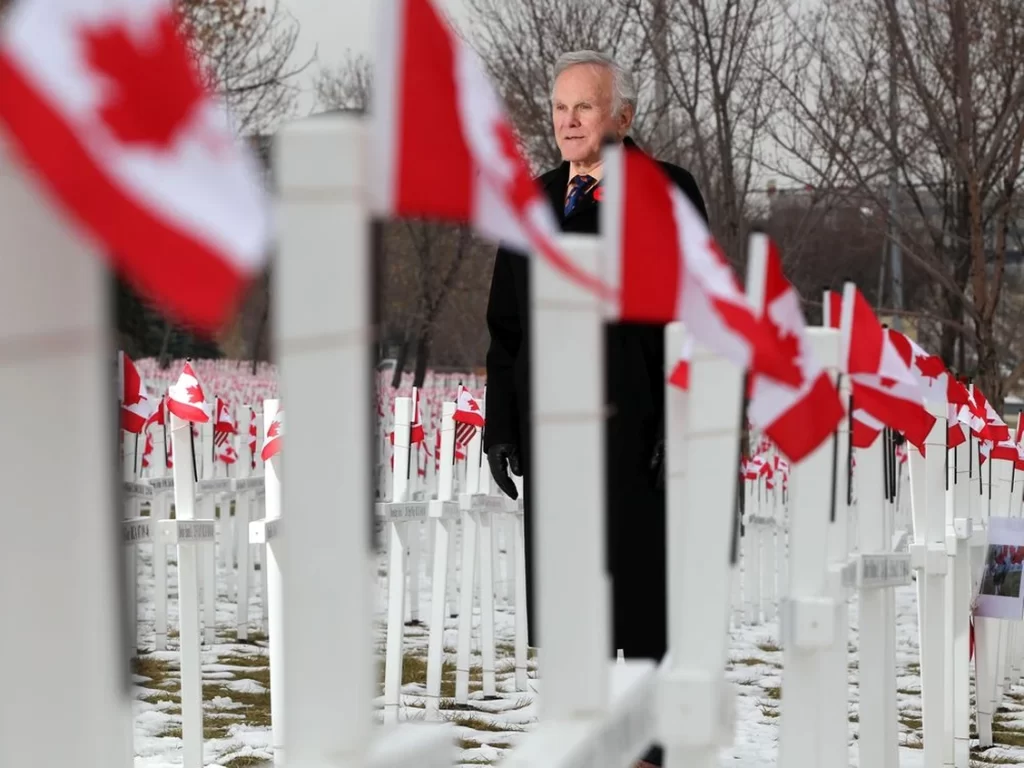
Calgary’s Field of Crosses started in 2009 and has grown to become one of the city’s most powerful and moving tributes to those who served in the military and died for the freedoms of Canadians. Founded by Murray McCann and the late George Bittman, the tribute alone Memorial Drive now includes more than 3,500 crosses. The first Calgary Herald article about the project, republished here, was printed on Nov. 5, 2009, in the Calgary Herald. The second article found below that provides an update on the project in 2015.
Remembering our Fallen: 3,000 crosses honour Calgarians who gave lives in war
(originally published Nov. 5, 2009)
By Jennifer McDougall
On the night of April 29, 1944, the crew of the HMCS Haida dropped all floats in an attempt to save the torpedoed HMCS Athabaskan as it sank in the Bay of Biscay.
As the sun began to rise, it was only a matter of time before both ships would be in plain view of the enemy.
The commander of the Athabaskan, Lt.-Cmdr. John H. Stubs, outranking the captain of the HMCS Haida, courageously ordered the rescue ship off to save itself. He was just 31 years of age.
One hundred twenty-eight sailors died and 88 became prisoners of war.
The only survivors of that attack were towed in a motorboat all the way to Plymouth, England, by a brave HMCS Haida sailor who ignored orders from his superior to stay on deck.
It is these stories of courage and commitment that George Bittman, chairman of the Calgary Poppy Fund and navy man on the next ship to come out of production, the Athabaskan II, says are important to tell.
“We have an obligation to our shipmates,” he says, to remind Canadians of the sacrifice that was made on their behalf.
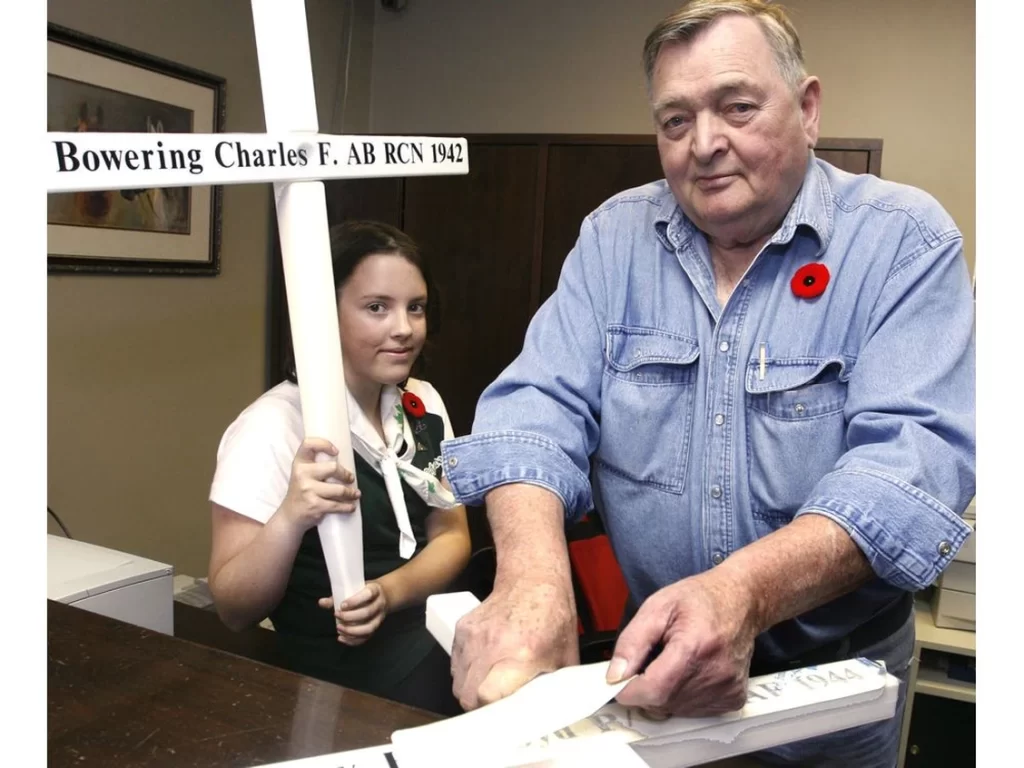
But for many people, particularly those who have not been exposed to war, it is difficult to conceptualize thousands of soldiers risking their lives.
This remembrance day, the Calgary Poppy Fund has initiated a program to help Calgarians willing to imagine a time when people felt they had to fight or risk losing their freedom.
Volunteers are erecting 3,000 white crosses symbolizing the number of Calgarians who gave their lives in war.
The three by two foot plastic structures will face the pathway along Memorial Drive for the duration of the poppy campaign.
The team is working to personalize the crosses with name labels, but it is proving difficult.
“When ships went down, the records went with them,” says Bittman, and the Books of Remembrance do not list hometowns or parents’ names.
“Many Americans joined the Canadian army so we are adopting them too.”
Bittman expects the crosses will make a significant visual impact, much like visiting the rows and rows of crosses standing in European countries.
He is unaware of any other Canadian cities that recognize remembrance day this way although the Calgary project was an idea borrowed from the United States.
The donor who made this project possible is Calgary businessman Murray McCann.
“I was driving in northern Georgia around the time of America’s Memorial day and found myself in a small town called Menlo. There were white crosses with names on them (representing) those who had given up their lives at different wars for freedom. You can read about it, but seeing all those crosses punched me right in the stomach. iIrealized how fortunate we are (and that we owe it) to those who gave up their lives so we could be free. I started wondering how many people there would be in a city like Calgary.”
Turns out there are approximately 3,000 that were from Calgary, and that was back when the population was only about 100,000, says McCann.
“Seeing all those will have an impact on my children and grandchildren. The freedom we have is on the backs of those who died and those who didn’t die, but were damaged by war and their wives and children. it’s easy to forget that.”
Of the $100,000 contribution McCann has made to fund the project, he says, “It is a very small give back . . . My whole career has been in peaceful times, I’ve never been threatened, I’ve never had to go to war. It is our free society that has allowed me the success I have had. I’m happy to do it.”
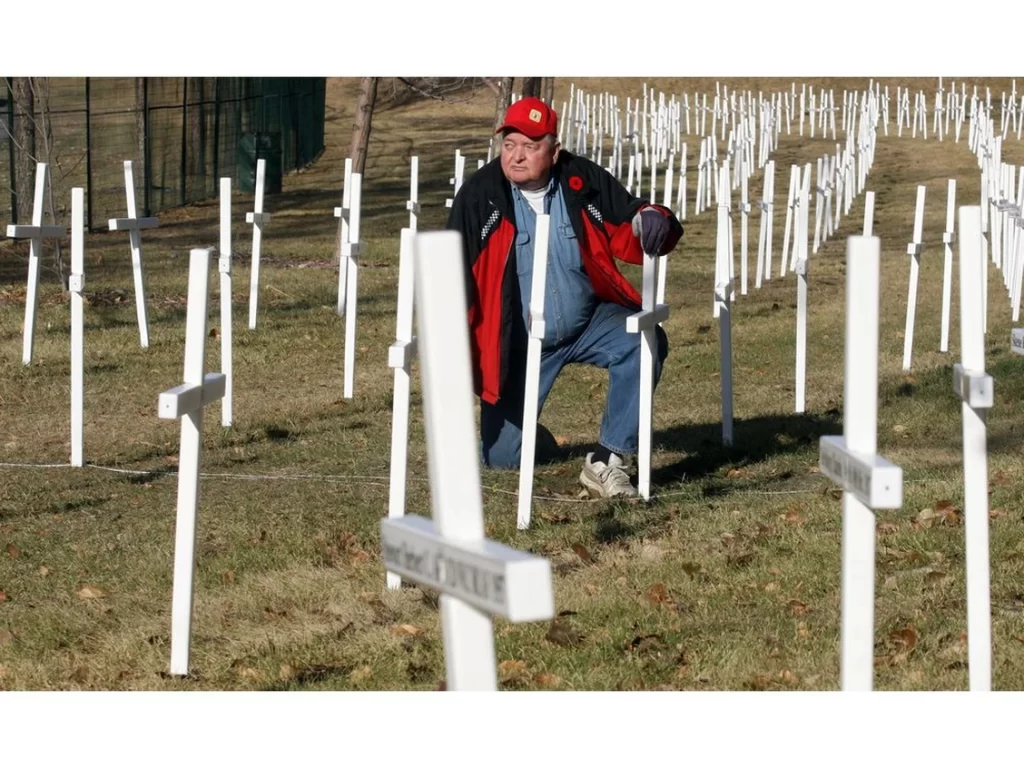
***
Tribute to the fallen
(originally published Nov. 3, 2015)
By Doug Hintz
Lest we forget, the more than 3,000 white crosses now on display along Memorial Drive aim to ensure that Calgarians remember the sacrifices of Southern Albertans in the fight for freedom. The Field Of Crosses Memorial Project pays tribute to the men and women killed in service to this country over the past century. The Herald’s Doug Hintz shares five things to know about this solemn memorial.
1. THE BEGINNING: The project was conceived by Calgary businessman Murray McCann in 2009 after he came across a similar display while driving through Georgia before Memorial Day in the U.S. Struck by the poignancy of that makeshift memorial, McCann consulted with his friend, the late George Bittman, who had served as head of the Calgary Poppy Fund, legion representatives and city officials, and the Field of Crosses Memorial Project was born.
2. THE VOLUNTEERS: Dozens of volunteers set the 3,200 crosses — each representing a southern Alberta soldier killed in action — on stakes that are installed at the site a week earlier. It takes about 200 volunteers with sledge hammers to drive the stakes through the river rock and shale below the grass at the site. It is estimated that more than 4,000 Southern Albertans were killed serving their country, and the number of crosses increases each year as more are identified.
3. THE CROSSES: Each cross is inscribed with the soldier’s name, age at death, rank, regiment and date of death in conflicts over the past century. Conflicts and missions represented in the field begin with the Boer War, which began in 1899, through the First and Second World Wars, Korean War, Vietnam peacekeeping mission, United Nations peacekeeping missions in the Middle East and Cyprus, and the Afghanistan War.
4. THE CEREMONIES: Each day from Nov. 1 to Nov. 11, a flag-raising ceremony takes place at sunrise, and the flags are lowered at sunset. Calgarians are invited to attend the ceremonies and to lay flowers or walk among the crosses in the two-hectare park along Memorial Drive between Centre Street and 3rd Street N.W. Public parking is available at the west end of the park. The crosses are removed after Remembrance Day, but a permanent cenotaph was installed at the site in September.
5. THE BENEFITS: The project coincides with the Calgary Poppy Fund’s annual fundraising campaign and the Canadian Legacy Project’s veteran’s food drive, which this year has a $100,000 fundraising target. “I don’t think there’s an excuse for our veterans who put their lives on the line to go hungry,” said Dave Howard, president of the Canadian Legacy Project, who noted that the number of veterans accessing the food bank is growing amid the economic downturn.
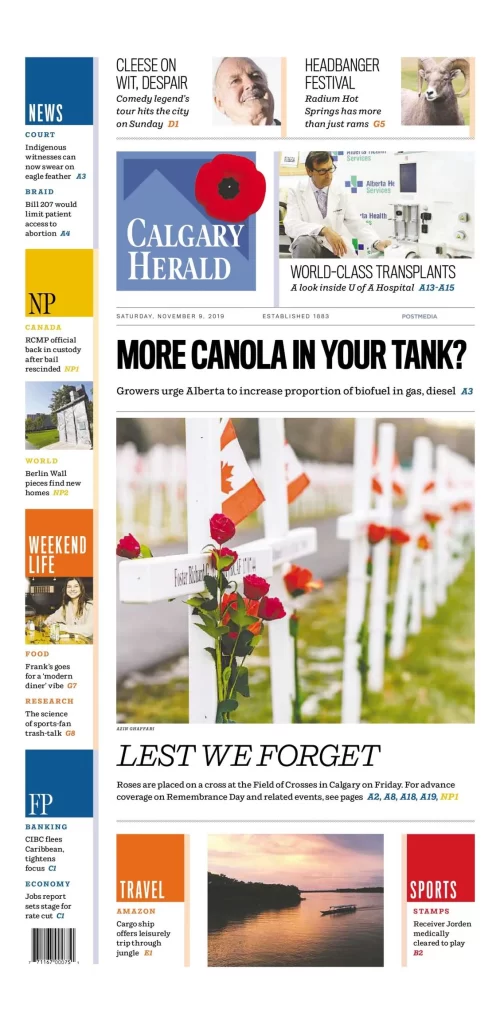
Article from Calgary Herald

